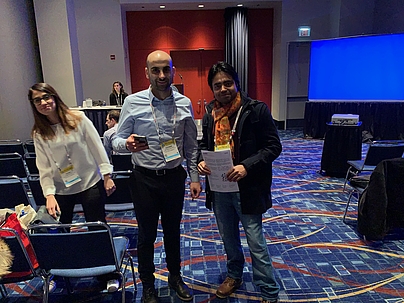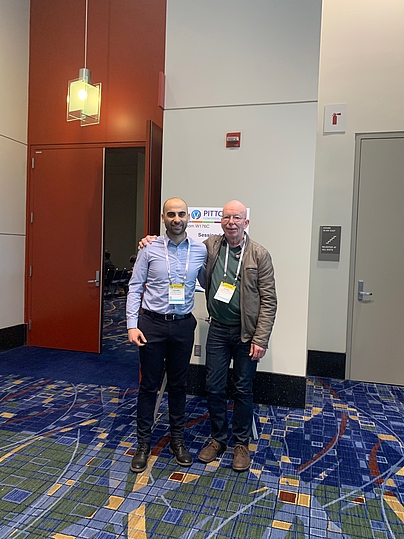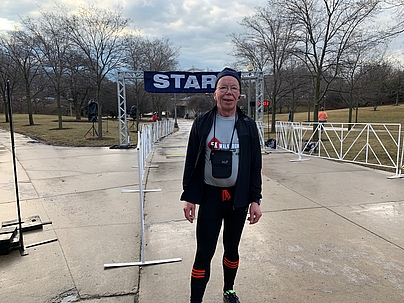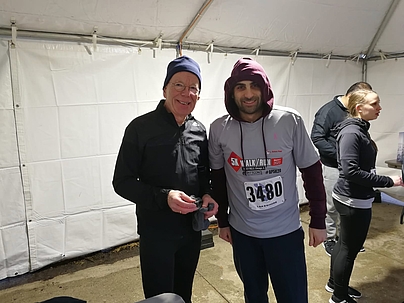PittCon, March 2020, McCormick Place, Chicago, IL, USA
Oral Sessions I
| Author Name: | Pritam Sukul/Jochen K. Schubert - University Medicine of Rostock |
| Session Title: | Biomedical Applications for Mass Spectrometry |
| Event Type: | Oral Sessions |
| Event Title: | Non-invasive Metabolic Profiling of Post-menopausal Bone Ageing via Real-time PTR-ToF-MS based Analysis of Exhaled Breath |
| Presider Name: | Co-Author: | Dagmar-Christiane Fischer, Thomas Mittlmeier, Phillip Trefz, Wolfram Miekisch, Jochen K. Schubert | |
| Affiliation: | Affiliation: | University Medicine of Rostock |
| Date: | Tuesday, March 2, 2020 |
| Start Time: | 13:10 |
| Location: | W175a |
Abstract Content: We have found that natural menstrual cycle and oral contraception diversely affected breath composition in pre-menopausal women. Based on those findings, we assumed that post-menopausal aging related obvious endocrine changes and metabolic effects might reflect in breath. After ethical approval, we executed PTR-ToF-MS-8000 (PDrift=2.3mbar, TDrift=75°C, VDrift=610Volt, E/N=139Td, Time-resolution=200ms) based breath-resolved measurements of exhaled volatile organic compounds (VOCs) and simultaneous bone-echography based determination of bone mineral density (BMD) in two age-matched cohorts (10 subjects in each) of post-menopausal women with normal/healthy and compromised range of BMD. VOCs were quantified in alveolar and inspiratory air by our customized ‘breath-tracker’ algorithm. Heatmap represents 52 masses of interest out of which 14 masses were up-regulated and 38 masses were down regulated in the cohort with compromised bone health. For initial statistical comparisons, we applied repeated measurement ANOVA on ranks (p-value ≤ 0.005) on their absolute values. Observed effects were substance specific. As potential endogenous origin of substances e.g. isoprene, acetone, ammonia and dimethyl sulfide etc. are related to in vivo biochemical pathways e.g. cholesterol biosynthesis, glycolysis/lipolysis, protein catabolism and gut bacterial methylation, changes due to compromised bone health can be attributed to metabolic and endocrine effects during post-menopausal aging. Thus, our very preliminary cross-sectional findings hereby support the fact that post-menopausal metabolic and endocrinal diversity due to deteriorating bone health and osteoporosis may reflect in breath VOC exhalation.

Oral Sessions II
| Author Name: | Giovanni Pugliese/Jochen K. Schubert - University Medicine of Rostock |
| Session Title: | Mass Spectrometry - New Capabilities |
| Event Type: | Oral Sessions |
| Event Title: | Characterization and Application of an Ion-funnel-PTR-ToF-MS for Improved Sensitivity in Breath Analysis |
| Presider Name: | Co-Author: | Felix Piel, Phillip Trefz, Wolfram Miekisch, Jochen K. Schubert | |
| Affiliation: | Affiliation: | University Medicine of Rostock |
| Date: | Tuesday, March 5, 2020 |
| Start Time: | 13:30 |
| Location: | W176c |
Abstract Content: Proton-transfer-reaction-time-of-flight-mass-spectrometry (PTR-ToF-MS) is a powerful tool for real-time monitoring of trace concentrations of volatile organic compounds (VOCs) in human breath. The sensitivity of the PTR-ToF-MS strongly depends on the ability to effectively focus and transmit ions from the relatively high pressure drift tube to the low pressure mass analyzer. As most of the ions crossing the drift tube do not exit through the small orifice at the MS interface, a large quantity of ion signal is lost. In the present study, a modular ion funnel (IF) was installed adjacent to the drift tube of a PTR-ToF 1000 (PTR-ToF 1000 Ultra, IONICON Analytik GmbH.) to improve the ion-focusing. The IF consists of a series of electrodes with gradually decreasing orifice diameters. A radio frequency (RF) and a direct current (DC) voltages are then applied to the electrodes to get the ions focused. We investigated the effect of the RF and DC voltages on the sensitivity of a pattern of VOCs including alcohols, aldehydes, ketones and aromatics. In a proof of concept study, the instrument operating both as normal drift tube (DC-mode) and at optimal IF conditions (RF-mode) was applied for the breath analysis of 21 healthy human subjects. For the range of investigated VOCs, a significant improvement in sensitivity and in limits of detection (LODs) was observed in RF-mode compared to DC-mode. LODs are limited by persistent chemical background signals but can be improved by a factor of 3-4 in RF-mode. Operating the instrument in RF-mode allowed the detection of more breath related compounds compared to DC-mode. The incorporation of the IF leads to an improvement in the sensitivity of the PTR-ToF 1000 and allows the real-time monitoring a broader range of potential breath biomarkers.


Social Events
5k-Anton-Parr Run am Ufer des Lake Michigan
Faculty Dinner im Fogo da Chao




